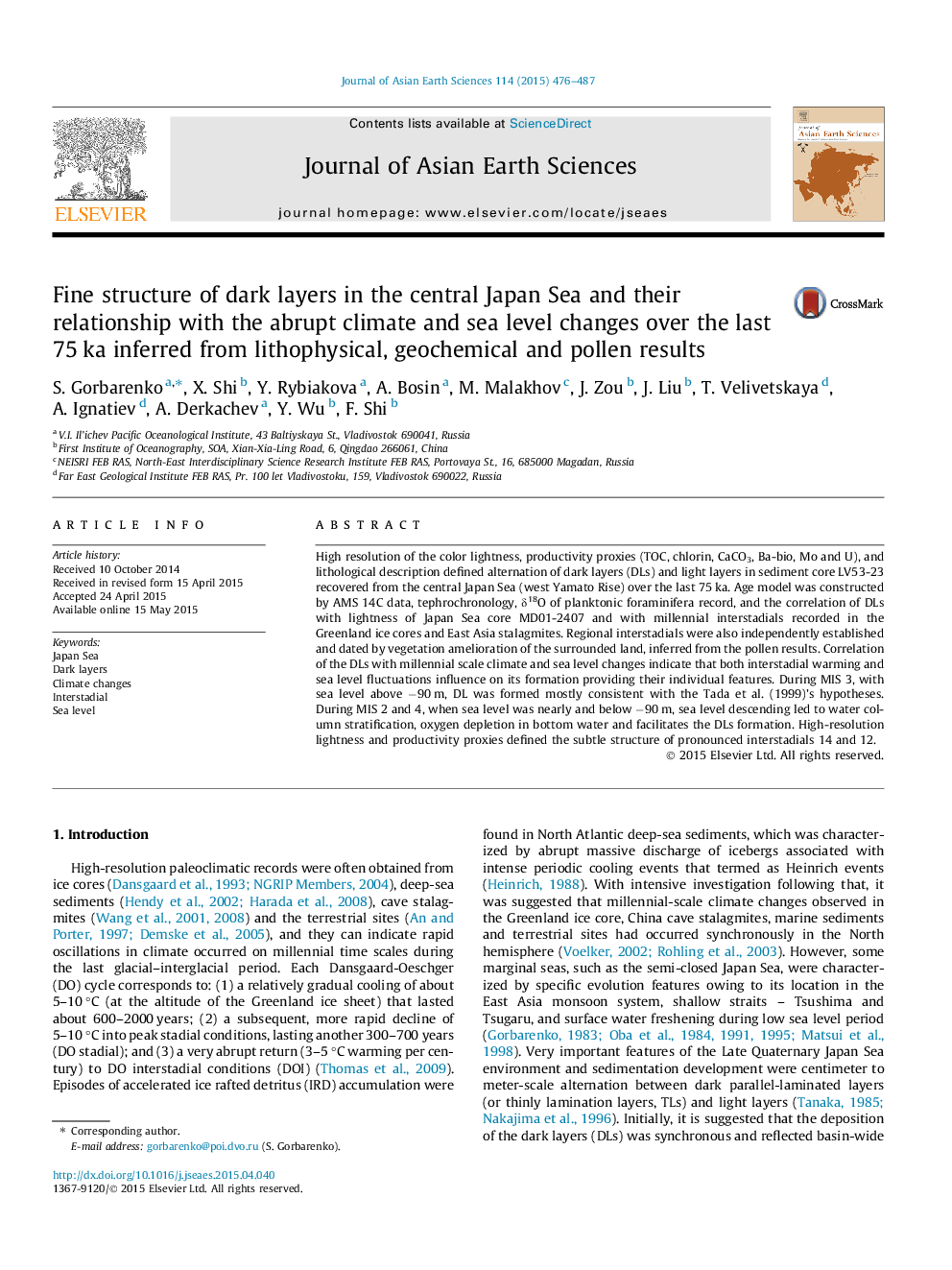| کد مقاله | کد نشریه | سال انتشار | مقاله انگلیسی | نسخه تمام متن |
|---|---|---|---|---|
| 4730153 | 1356739 | 2015 | 12 صفحه PDF | دانلود رایگان |
• Sediment core was dated by AMS 14C, correlation of lightness and vegetation change.
• Color, productivity and lithology define alternation of dark and light layers (DL).
• During MIS 3 DLs were formed mostly consistently to Tada et al. (1999) hypotheses.
• At MIS 4/3 boundary DL 16 was induced by sea level dropping before interstadial 16.
• High-resolved color and productivity show subtle structure interstadials 14 and 12.
High resolution of the color lightness, productivity proxies (TOC, chlorin, CaCO3, Ba-bio, Mo and U), and lithological description defined alternation of dark layers (DLs) and light layers in sediment core LV53-23 recovered from the central Japan Sea (west Yamato Rise) over the last 75 ka. Age model was constructed by AMS 14C data, tephrochronology, δ18O of planktonic foraminifera record, and the correlation of DLs with lightness of Japan Sea core MD01-2407 and with millennial interstadials recorded in the Greenland ice cores and East Asia stalagmites. Regional interstadials were also independently established and dated by vegetation amelioration of the surrounded land, inferred from the pollen results. Correlation of the DLs with millennial scale climate and sea level changes indicate that both interstadial warming and sea level fluctuations influence on its formation providing their individual features. During MIS 3, with sea level above −90 m, DL was formed mostly consistent with the Tada et al. (1999)’s hypotheses. During MIS 2 and 4, when sea level was nearly and below −90 m, sea level descending led to water column stratification, oxygen depletion in bottom water and facilitates the DLs formation. High-resolution lightness and productivity proxies defined the subtle structure of pronounced interstadials 14 and 12.
Journal: Journal of Asian Earth Sciences - Volume 114, Part 3, 15 December 2015, Pages 476–487
